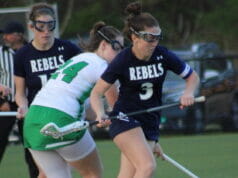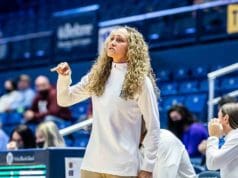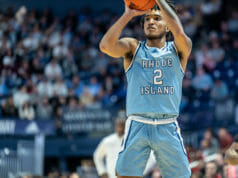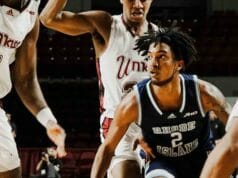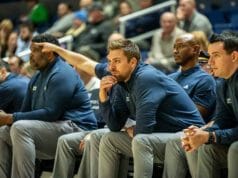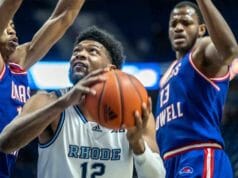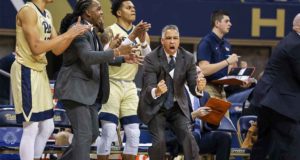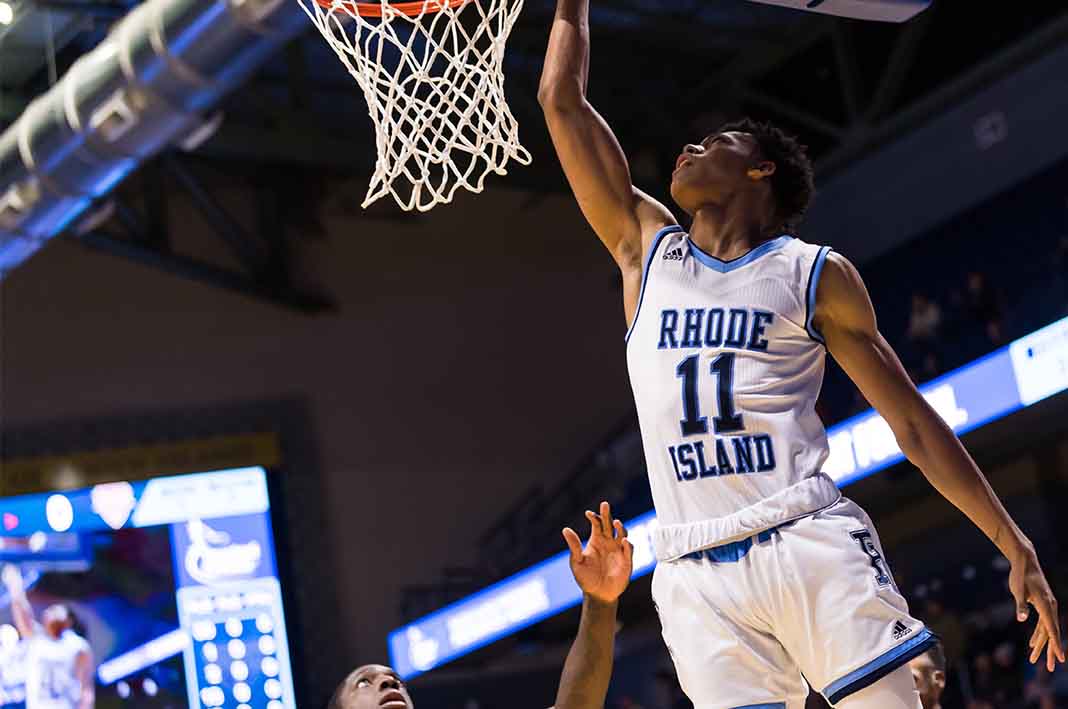
Performance metrics are everywhere. As a communications professional by day and a college basketball analyst by night, I can’t escape them. Nightmares of Kenpom and Google Data Studio will both dot my future. That aside, I’ve learned a few things from bathing in metrics all too often. One is that all the data in the world means nothing if there’s nobody to draw actionable insights from it.
So let’s try. Without digging too deeply into basketball algorithms that can stump even the most numbers-versed, we’ll examine a few 18-19 top-line statistics of David Cox’s Rams.
17.8 – This is the number of fouls per game that the Rhode Island offense was able to draw on its opponents, ranking 10th of 14 in the Atlantic 10. Last season the Rams were largely a young and physically immature group, save for Jeff Dowtin and Cyril Langevine.
That composition often results in not only struggling to absorb contact when it occurs, but also in not understanding how to encourage it. This results in more hand-in-the-face jumpers being taken which proved out a year ago. Great teams place opponents in reactive positions and dictate contact. This helps in many ways, including controlling pace, saddling key opposing players with foul trouble, loosening up defenses, and creating depth mismatches. While you can still win without drawing fouls, it sure helps if you can add the skill to your arsenal.
With the Rams more experienced and more physically mature given strength and conditioning gains, expect this number to rise — and directly correlate to URI rising in the standings.
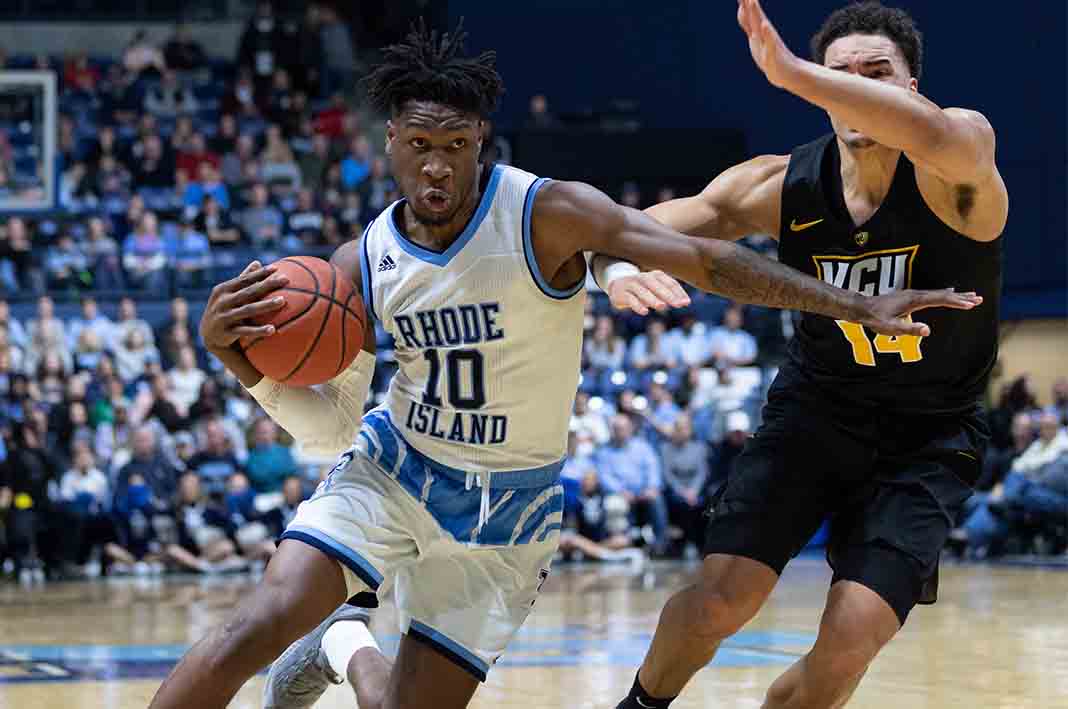
68% – Rhode Island’s free-throw percentage. While a much discussed topic on the message board circuit, I’ve always viewed free throws as much more than just a motor skill. Sure, a gazillion reps in practice contribute to improvement, but the mental, mindful aspects of free throw shooting are just as important. For instance, the ability to maintain focus through environmental factors like different arena sight-lines and noise, and the capacity to power through physiological factors such as fatigue both factor into a player’s success (or lack of it) at the stripe.
This season – and specifically the Rams non-conference schedule – represents a tremendous opportunity for what should be an NCAA Tournament hopeful team. The A-10 will also be improved and that means lots of “close and late” situations for the Rams.
URI has a terrific point guard and benefits from quality care-taking of the ball, one necessity in tightly contested games. Can each player find the right mix of the above ingredients to improve his free-throw percentage incrementally? If so, you add three or four percentage points to the team’s overall– and likely a couple of critical Selection Sunday wins in the process.
7.1 – This number, which ranked tied for fifth in the conference, represents steals per game for Rhode Island a year ago. That’s certainly nothing of which to be ashamed. It aided a Rams team with half court offensive deficiencies in generating run-out buckets. Expect it to increase this year.
The squad is older, wiser and more familiar with David Cox’s system. And new personnel position Kingston to become deflection city. For the first time in a loooonnnnng time, the Rams have a cache of wing players clustered between 6-foot-5 and 6 foot-9: Tyrese Martin, Antwan Walker, Dana Tate, Mekhi Long, and Jacob Toppin.
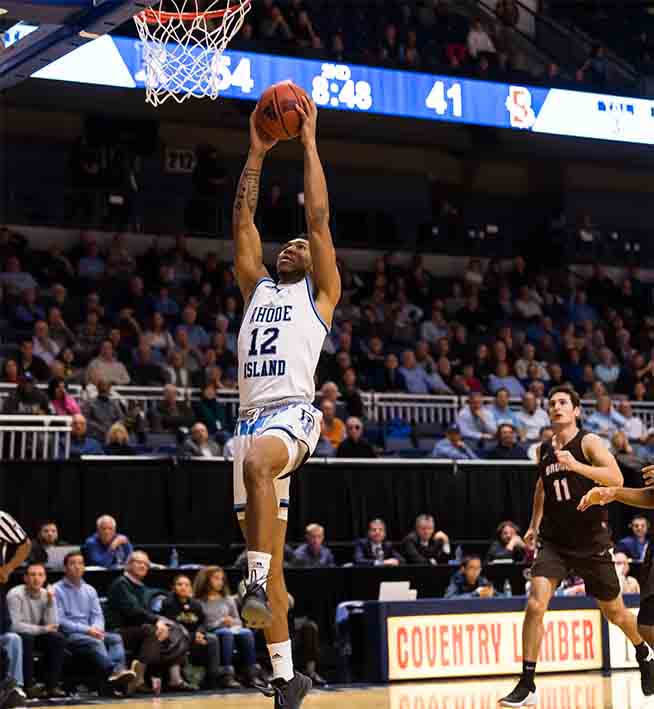
The rangy Dowtin, 6-5 himself, joins them out high, with Langevine (6-8) and Jermaine Harris (6-8) on the interior. Throw in some pesky guards in Fatts Russell and newcomers Jeremy Sheppard and Gregory Hammond (6-5) and it’s an athletic mixture of guys who can guard multiple positions and have disruptive length from wing-to-wing.
This should increase the amount of swipes we see and could vault an already stout three-point field goal percentage defense (32.3%, 4th in league) to the top.
28% – The elephant in the room a year ago, three point shooting percentage. The Rams ranked dead last at No. 351. But as Henry David Thoreau said “Never look back unless you’re planning to go that way,” so I’m not going to spend too much time on this one.
Basketball is a game of yin and yang, with elements like fouls drawn (above) also influencing stats like this one. Dowtin is a capable shooter, newcomer Sheppard shot 44.3% last year and has a blended percentage of 39.8 (140-351) at East Carolina and CCF, and Russell began making shots — and more importantly taking a higher percentage of better ones as the season wore on.
If interior players not named Langevine can continue their growth and become more productive, the extra attention they draw will free up perimeter real estate and lead to cleaner shot opportunities. Don’t expect the Rams to challenge Davidson for league supremacy here, but this has nowhere to go but up — and will.


